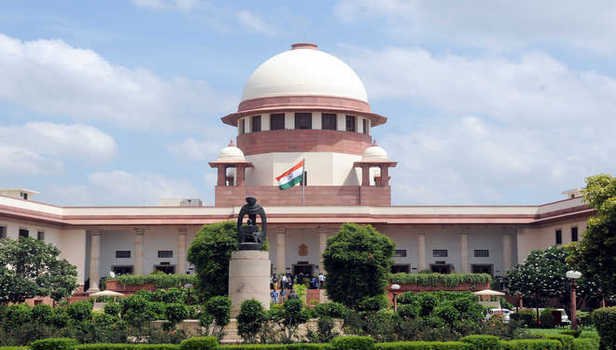The Supreme Court said, Why is the government a mute spectator to hate speech?
21 Sep 2022 ( IBTN News Bureau )
The Supreme Court of India has raised questions on the attitude of the government in the hate speech case. The Supreme Court has said that why the government has remained a mute spectator in this matter? Apart from this, the Supreme Court has also described the role of TV channel anchors as important.
The Supreme Court has expressed displeasure over the debate on news channels in India. On Wednesday, 21 September 2022, during a hearing in the case of hate speech, the court has said that hate speech is often given place in such debates. The Supreme Court has asked the central government that why is it being a mute spectator to such hate speech?
During the hearing of the case, the Supreme Court has asked many questions to Additional Solicitor General (ASG) KM Natraj, appearing for the Central Government. The Supreme Court bench has asked, "What is the problem in this after all? Why is the Indian government not taking any stand in this matter? Why has the government remained a mute spectator to such matters?''
The Supreme Court has advised the Central Government that the Center should not stand against the Court in this matter, but should help.
Question on debate of news channels
The Supreme Court has also commented on news channels in India that often include hate speech in TV debates. The Supreme Court has found that political people benefit the most from hate speech and TV news channels provide an opportunity for this.
A Supreme Court bench headed by Justice KM Joseph has observed that the role of a news channel anchor is very important in this context. The court believes that it is the responsibility of the anchor to decide whether the people involved in the TV debate should stay away from hate speech. The second judge on this bench is Justice Hrishikesh Rai.
The Supreme Court made this remark during the simultaneous hearing of several petitions regarding hate speech.
Freedom of Speech: To what extent
The Supreme Court has stressed that freedom of speech is very important but hate speech on TV channels cannot be exempted. The court has pointed out that a TV channel in the UK has been fined heavily for hate speech.
Senior advocate Sanjay Hegde, appearing for a petition on hate speech, also agreed with the court's observation. He said, "Channels and politicians get fodder from such speeches. Channels get money and they make 10 people sit together in the debate."
Don't impose your point of view anchor
The Supreme Court bench said, "The anchor should take forward what the people are saying, not what they themselves want to say. The pillars of democracy should be independent, they should not follow anyone's orders."
It is not acceptable to vent hatred
The bench said, "An anchor can have his own point of view but things get worse when you have people with different views in front of you and you don't allow them to speak. That's how you create hate and that gives you TRPs."
Senior advocate Sanjay Hegde told the bench that on Tuesday, September 20, 2022, US President Joe Biden had said that we cannot give hate oxygen. To this Justice Hegde said, "Not at all. We cannot spread hate air.
Additional Solicitor General Natraj, appearing for the Central Government, told the court that 14 states have sent their suggestions on this.
The Supreme Court has asked the Center to file the replies of all the states together. The next hearing of this case will be on November 23, 2022.
(Click here for Android APP of IBTN. You can follow us on facebook and Twitter)
Share This News
About sharing
-
 05 Aug 2025
At least four dead, dozens missing as flash floods hit north India village
05 Aug 2025
At least four dead, dozens missing as flash floods hit north India village
At least four dead, dozens missing as flash floods hit north India village
-
 12 Jun 2025
Air India flight crashes in Ahmedabad with more than 240 people on board
12 Jun 2025
Air India flight crashes in Ahmedabad with more than 240 people on board
Air India flight crashes in Ahmedabad with more than 240 people on board
-
 15 May 2025
Indian-Administered Kashmir devastated after deadly cross-border strikes, residents call for help
15 May 2025
Indian-Administered Kashmir devastated after deadly cross-border strikes, residents call for help
Indian-Administered Kashmir devastated after deadly cross-border strikes, residents...
-
 11 May 2025
Thousands of Kashmiris remain displaced despite India-Pakistan ceasefire
11 May 2025
Thousands of Kashmiris remain displaced despite India-Pakistan ceasefire
Thousands of Kashmiris remain displaced despite India-Pakistan ceasefire
-
 11 May 2025
Calm returns to cities in Indian-administered Kashmir as ceasefire holds
11 May 2025
Calm returns to cities in Indian-administered Kashmir as ceasefire holds
Calm returns to cities in Indian-administered Kashmir as ceasefire holds



